Spring 2021: Climate Justice
Send us a picture of you gearing up for a great quarter of Better Days content!
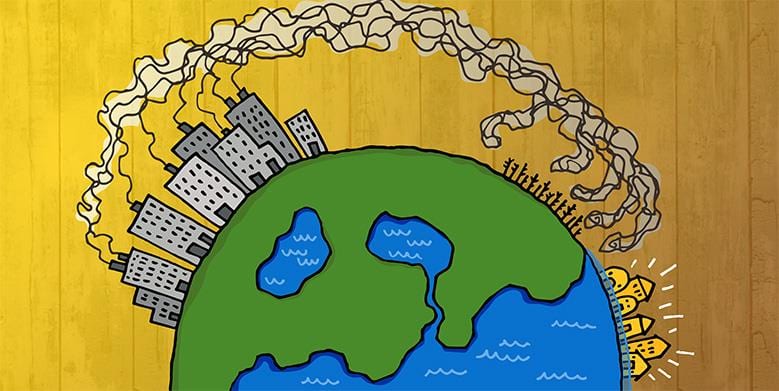
Disclaimer for this quarter’s Better Days topic: This quarter we will be addressing different facets of climate justice and how it intersects with social justice. We want to first state that these topics are complex and critically important to the wellbeing of our societies. We want to acknowledge that we are not experts on these subjects and are unable to address the full complexity of the topics we will cover this quarter through this Better Days format. If you would like to further discuss any of these topics, feel free to reach out to one of our ambassadors, Maia Heffernan at isca_staffambassador@wwu.edu or Alyssa Tsukada at isca_studentambassador@wwu.edu. There are also biweekly discussion-based Sustainability Ambassador meetings on Wednesday nights from 4:30-5:30 that address these topics in more depth. The first meeting is on March 31, and subsequent meetings occur every other week after that. Contact Alyssa Tsukada for more information.
This week’s topic: According to Mary Robinson, the former president of Ireland and current Chair of the Elders of the United Nations, climate justice “insists on a shift from a discourse on greenhouse gases and melting ice caps into a civil rights movement with the people and communities most vulnerable to climate impacts at its heart.” Climate justice explores the intersections of the science and reality of climate change and the undeniable poverty and inequity in social, political, and economic structures around the globe. Low-income communities are most affected by the effects of climate change. This is true not only for developing nations, but for all countries. In addition to this, we see that these are communities of color, which emphasizes the need for a holistic, social economic lense when considering the effects of climate change. Climate justice is the study of how these two topics connect, and what we can do to take a human-rights and social justice approach as well as a scientific approach to the solutions for climate change and global warming.
Another critically important aspect of climate justice is the conversation of privilege. There are many people who are not directly affected by social or environmental injustices. It is a difficult thing to come to terms with one’s privilege, but it is critically important that those who do have privilege take a look at themselves and their lives to see where and how they can stand with those who are affected by social and environmental injustices. It takes all of us to make things better and just for all. As we will see in the subsequent weeks of our Better Days campaign, climate justice is not only an ecological issue. It is a complex, detailed, nuanced topic. It takes people of all expertise, background, and economic status to fully comprehend and work for climate justice.
SAP Connection: Objective 2.4: Establish sustainability-related interactive experiences, cooperatively designed and supported by WWU and community partners, to help build relationships among members of Western, and with the broader community by 2019.
Resources
-
United Nations Sustainable Development Goals article about climate justice. This is where the quote from Mary Robinson came from.
Take some time to make some art! Send us a picture of your visual representation of the four spheres of sustainability.
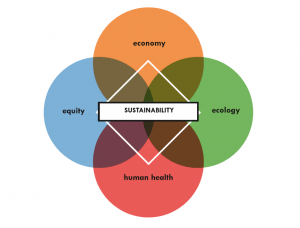
Sustainability is interconnected, it does not just refer to ecological health. It has been defined as having four spheres: ecology, economy, equity, and human health. These four sections of point to the fact that sustainability is full of intersections. It's not just about protecting our planet for future generations, it also encompasses the call to justice for the equity and health of all people on the planet -- especially BIPOC, disabled, and poor communities that are most directly affected by the effects of climate change. Sustainability is also prevalent and relevant in the economic sector. The choices that we make in terms of the products we buy and produce, and the ways in which we produce and consume energy are major drivers for the health of the planet.
SAP Connection: Student Life, Goal 3: Social, Economic, and Ecological (SEE) sustainability principles are integrated in student career and lifelong practices.
Resources
How do you celebrate Earth Day? Send us a picture of yourself participating in this special day!
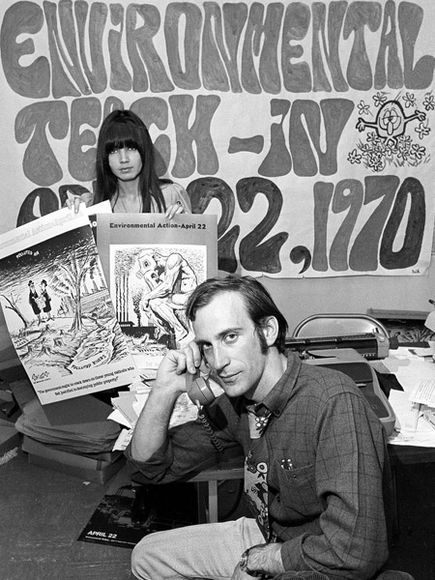
Earth Day is a global day of celebration, activism, and raising awareness about the health of the Earth. All over the world, people take part in organized events and take the time to learn about what they can do to help make the planet a better, healthier place. But how did this all start? What was the first Earth Day like? The first Earth Day happened in 1970 and was a teach-in at colleges all around the United States. Wisconsin senators Gaylord Nelson and Pete McCloskey were concerned about the health of the environment in the United States. The country had been heavily burning fossil fuels since the Industrial Revolution with little to thoughts about the environmental repercussions. Nelson and McCloskey enlisted the help of activists all over the country, and the teach-in was set for April 22nd. Surprisingly, millions of people in the United States were concerned about the health of the environment and how it affected humans' health. Earth Day was a bipartisan-supported, welcome wake-up call to put the health of the planet and its inhabitants first. It spurred an outpour of legislation including the creation of the Environmental Protection Agency (EPA), the National Environmental Education Act, the Occupational Safety and Health Act, and the Clean Air Act. Two years later, the Clean Water Act was passed. Later, in 1990, Earth Day became a global celebration and call to action
This year, the Office of Sustainability is celebrating Earth Day by having a panel discussion with prominent sustainability workers at Western and in the greater Bellingham community. They will discuss the history of Earth Day and how we can build a more sustainable community. This will take place at noon on April 22nd, 2021; we highly recommend you attend if you have the time! It will be a great way to connect with the community and learn about what we can all do to make our community more sustainable.
Resources
Send us some photos of you doing some gardening or planting a tree! Enjoy the fresh air (you're making it cleaner)!

Much of what we do produces carbon dioxide, whether we are directly contributing carbon dioxide to the atmosphere through driving and other means of transportation, or indirectly through the materials we buy and the energy we use to power our homes. As inescapable as this is, we can make an effort to commit ourselves to implementing carbon offests into our lives. As we have discussed earlier this week, the effects of greenhouse gases in the atmosphere that cause global warming and climate change disproportionately affect those who live in low-income communities and countries. When we choose to take actions that emit less carbon or offset our carbon usage, we are not only saving the planet, we are saving each other. We must all learn how we contribute carbon to the environment and what we can do to offset it.
Resources
This is a good way to get ideas and make plans for how you will reduce your carbon footprint and discover possible carbon offsets you can practice.
SAP Connection: Built Environment Objective 1.3: In the long term, achieve carbon neutrality by 2035, firstly through reduction and secondly through offset.
Send us a picture of yourself checking out our website. These are important topics and it is so crucial that we take the time to educate ourselves about the different facets of sustainability!
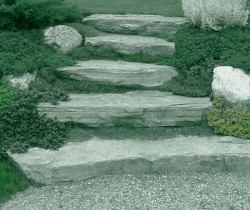
Two of the four pillars of sustainability touch on equity and human health. As we have discussed in previous weeks, it is most often those who are affected the most by social inequities that face the biggest impacts of climate change and are often left out of the "sustainability conversation." In the next few weeks, we will be exploring how sustainability intersects with these social inequities.
This week, we are focusing on the intersection of disabilities and sustainability. To start off, it is important to address some definitions. A disability is a physical or mental impairment that substantially limits one or more life activities. A handicap is a problem a person with a disability encounters while interacting with an environment that does not accommodate the disability. Lastly, ableism is discrimination or prejudice against those with disabilities. It can take the form of ideas/assumptions, stereotypes, attitudes/practices, physical barriers in the environment, and larger scale oppression.
As the effects of climate change become more common and substantial, it is important to take into account that all people will need assistance and help to navigate the challenges that arise when facing climate change and participate in the innovations being created to fight it. This can include varying methods of transportation to evacuate an area, building accommodations, inclusivity in all facets of society, and most importantly a concerted effort to tear down any prejudices or assumptions made against specific groups of people. People with disabilities must be taken into account when looking towards the future. If we cannot all face the most drastic challenges together, then we will get nowhere in our fight against climate change and inequality.
Resources
How do the Black Lives Matter and climate justice movements intersect?
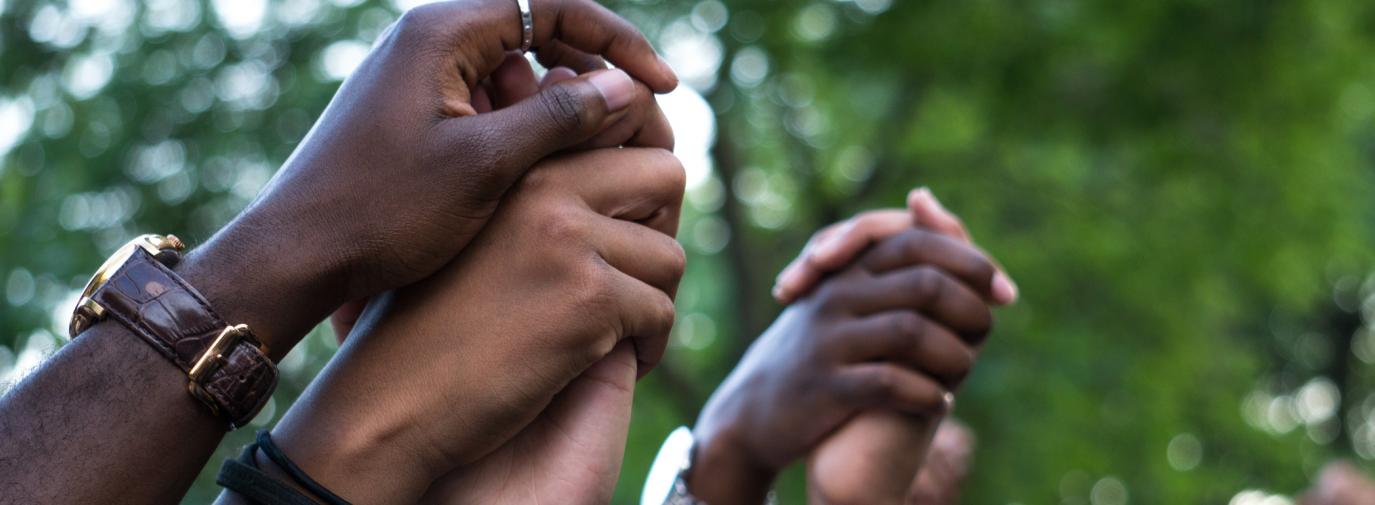
Recently, the climate and social justice communities are increasingly calling us to recognize the connections between climate and social justice. The Black Lives Matter movement has been bringing these intersections to the forefront. People in lower economic brackets are the first and the most drastically affected by climate change. This is not only a case of humans' impact on the climate, but it is also a social justice issue. Overwhelming evidence shows that major polluting companies build their plants or factories in low-income communities. Due to political, social, and economic suppression, these communities are almost always communities of color. EPA studies have shown that race actually has a stronger influence on exposure to pollutants than poverty, showing that these two issues — climate and social justice — are inherently linked. This is termed environmental racism and is happening all over the world, not just the United States.
So, what can be done? How do we overcome these two major issues? There are so many details that cannot be covered in this post, but the most important takeaway is that the fights for justice are not separate. Climate justice is racial justice. When we connect the two movements, our voices are amplified and uplifted. Working together against the inequities that the planet and people of color experience will sustain us all in our march to make the world a better and fairer place.
Resources
When we connect with others, we create a strong and united front against the issues we face. This unity is healing. Try to find a way to connect with others and the earth this week!
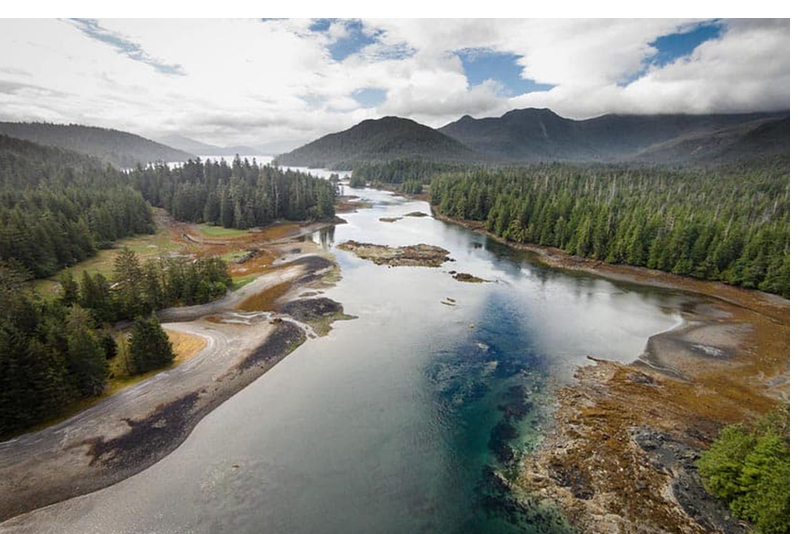
This week we are focusing on the intersection of indigenous sovereignty and climate justice. Indigenous sovereignty is defined well by the Climate Justice Alliance. "A just nation-to-nation relationship means breaking the cycle of asking Indigenous nations to choose between a colonial imposed model of an extractive economy or preservation of their Indigenous sovereignty, including protection of their traditional lands, waters and air, and the right to practice their spirituality and cultural lifeways." Indigenous peoples in the United States and around the world have been disproportionately impacted by climate change. Not only does it take economic, political, and social tolls on indigenous communities, but it also disrupts the connection that these communities have with the land. Indigenous communities have been on the front lines fighting climate change for years, and it is critical that we listen to their wisdom. The only way we will be able to solve the issues caused by climate change is to work with each other and listen to what those who are most affected and fighting the hardest know and have to say. Here in Bellingham, Western is located on the ancestral homelands of the Coast Salish Peoples. To learn more about how climate justice and indigenous sovereignty intersect and see whose land you're on, visit the websites listed in the resources below.
Resources

All voices are critical in the fight for climate justice. This includes individuals from the LGBTQ+ community, a community disproportionately affected by climate change. Generally, there are strong and supportive LGBTQ+ communities in liberal coastal areas, which are often disproportionately located in areas subject to more intense changing climate patterns, such as sea level rise and seasonal hurricanes (Grist).
Also, people in the LGBTQ+ community truly understand what it means to fight for change and help the public to understand something they might not have previously thought about or encountered. Their knowledge of how to foster behavior change and change people’s minds is invaluable in the fight for climate justice. Just the same, when we work for climate justice, we are also working for LGBTQ+ justice and liberation. We can support the LGBTQ+ movement and also the climate justice movement in both indirect and direct ways. Reducing the amount of fossil fuels we produce will reduce the amount of environmental harm that befalls this community and others around the world. We can do this by choosing to bike or walk around Bellingham when we can, or learning about and purchasing carbon offsets. We can support in direct ways by signing up to receive emails about events and resources from LGBTQ+ Western (site linked below), learning about how to incorporate inclusive language (see resource below), or learning the proper ways to be an ally. See the resources below for this information. Together, as a community, we can create better days for us all.